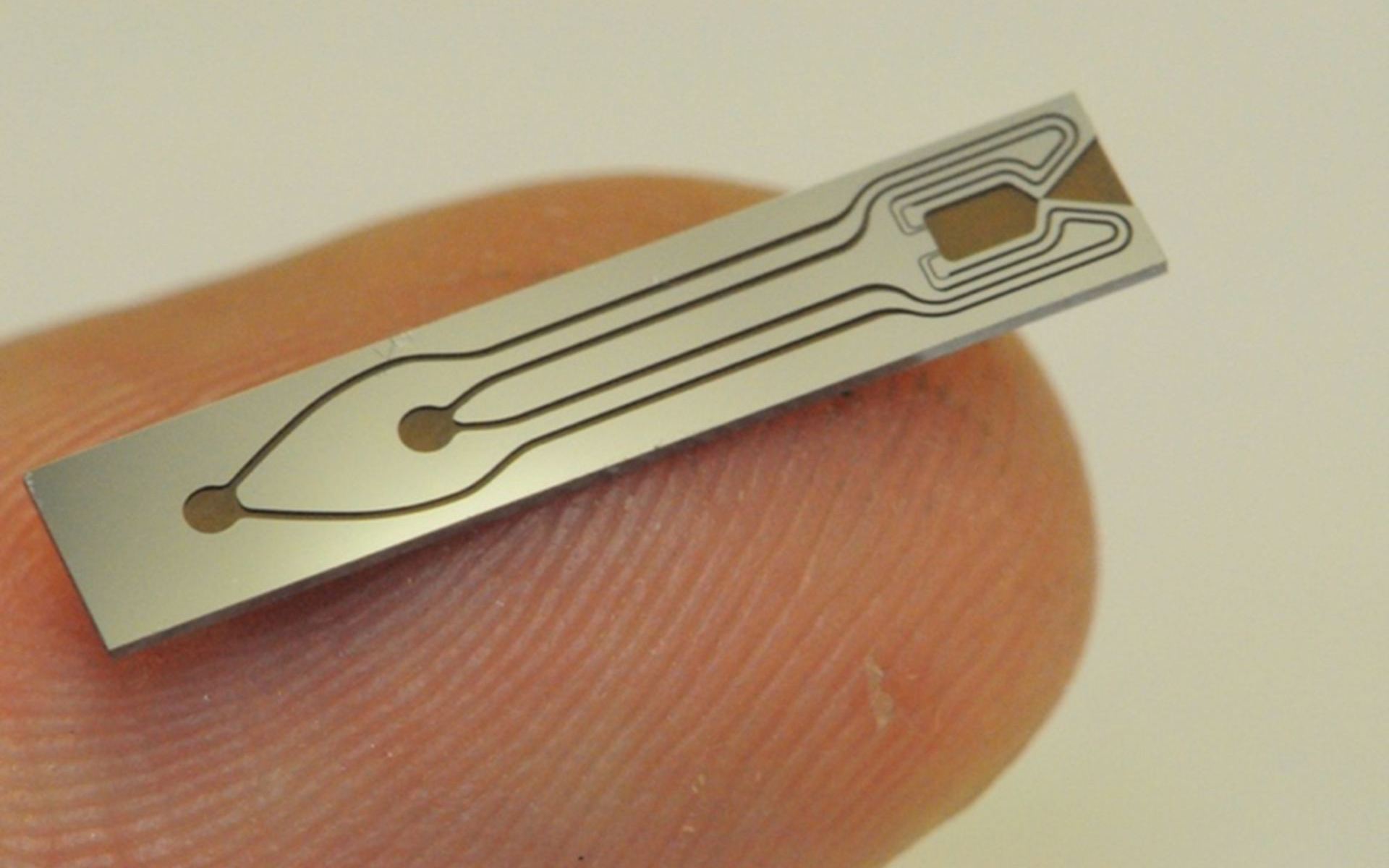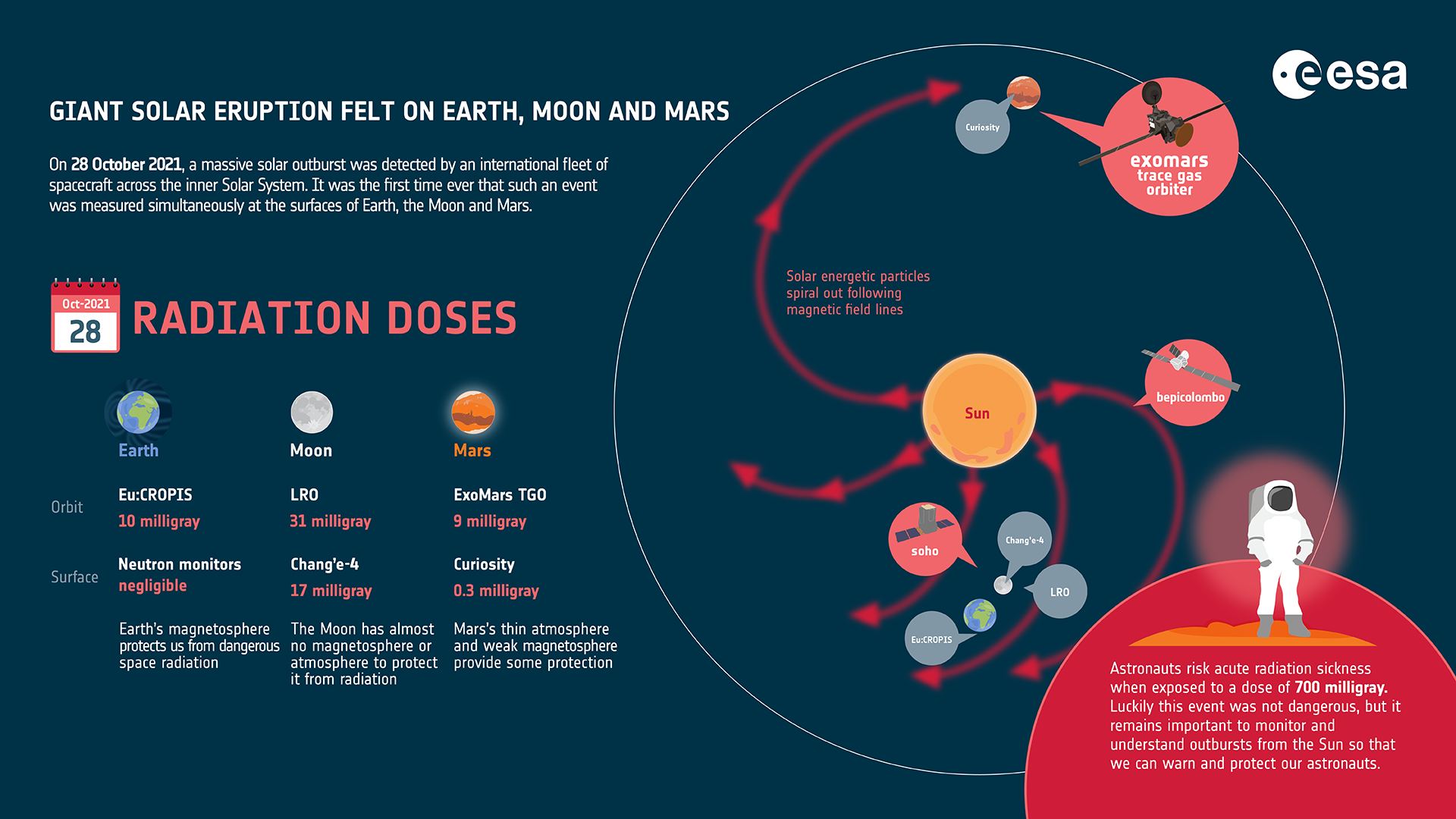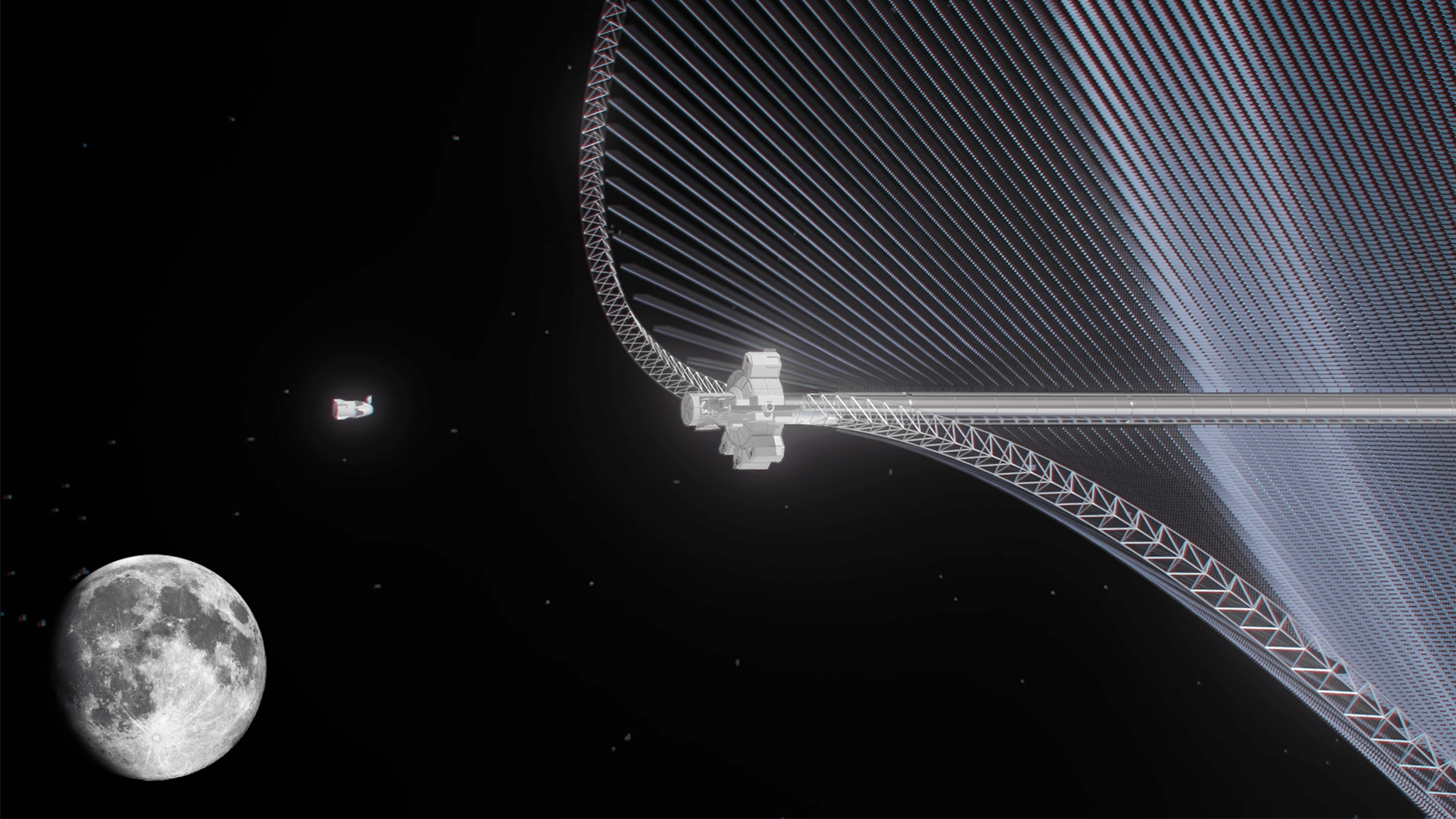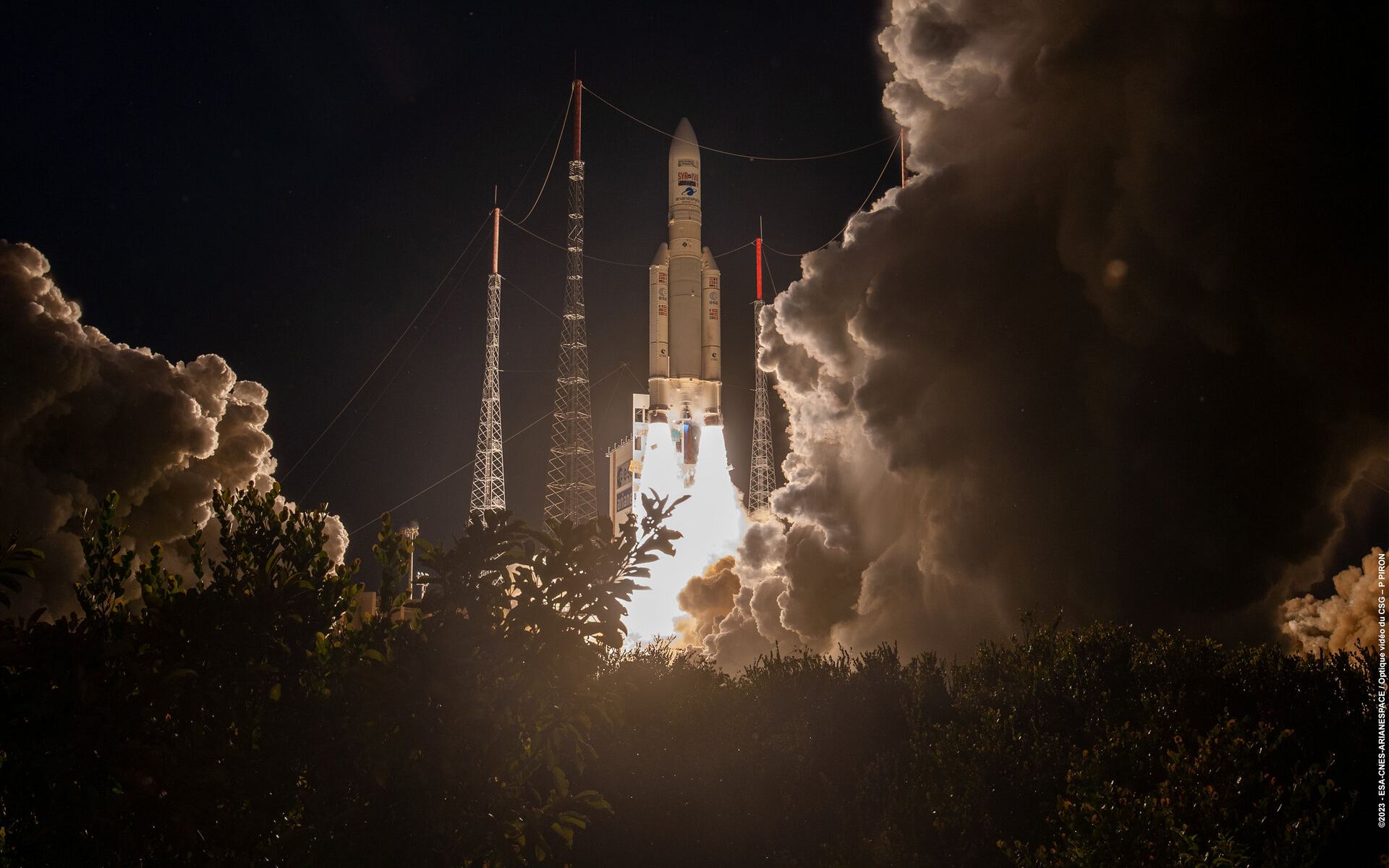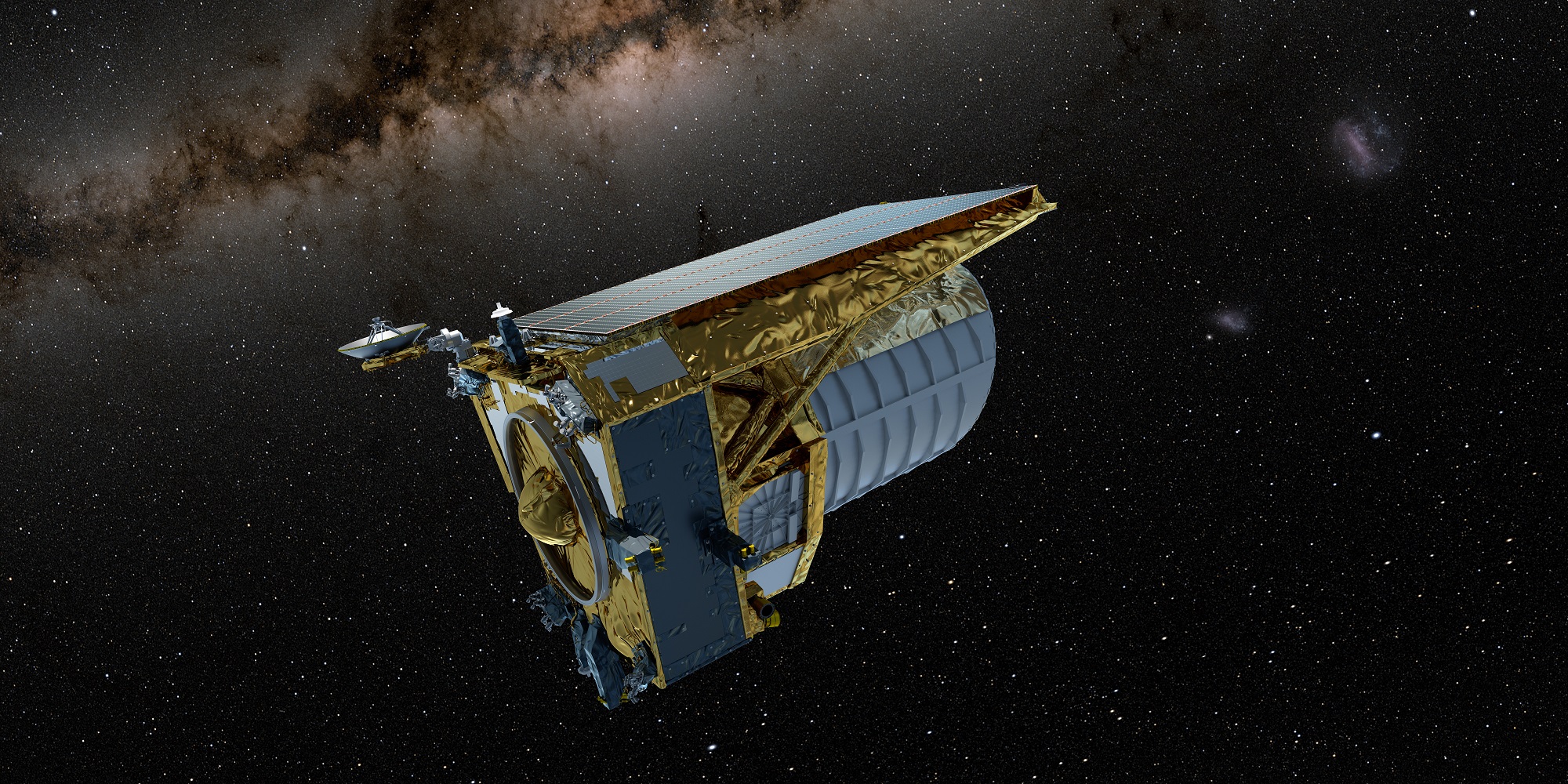Engineers working with the European Space Agency have developed a new thruster design smaller than the tip of your finger. Despite its small size, this mini-thruster designed for CubeSats appears to be highly efficient without the use of toxic chemicals.
Continue reading “Spacecraft Could be Equipped With Tiny Thrusters That Use Water for Propellant”A Last-Minute Addition to the Solar Orbiter Allows it to See More Deeply into the Sun’s Atmosphere
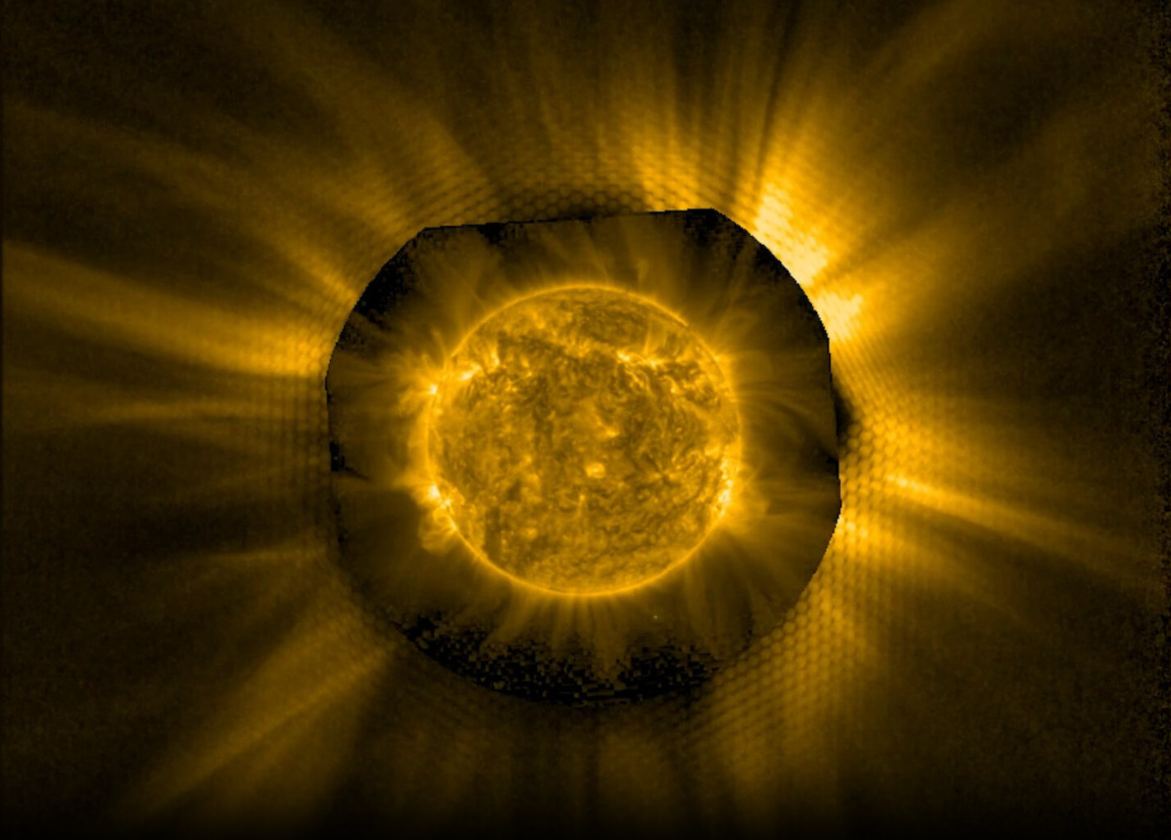
Spacecraft instruments are highly specialized and can take years to design, build, and test. But a last-minute hack to one of the instruments on the ESA’s Solar Orbiter has allowed the spacecraft to take some difficult observations it would otherwise have been unable to take.
It’s all because of one astronomer and an instrument door.
Continue reading “A Last-Minute Addition to the Solar Orbiter Allows it to See More Deeply into the Sun’s Atmosphere”Crew-7 Reaches the International Space Station

SpaceX Crew-7, the next group of four astronauts, are now on board the International Space Station, and this diverse crew is definitely putting “International” in the ISS. The new crew hails from four different countries: the US, Denmark, Japan and Russia. There will be 11 people on board the station for a few days before the Crew-6 foursome head back to Earth.
NASA has at least 200 science experiments and technology demonstrations queued up for Crew-7[‘s six months space, many of which will help prepare for the upcoming Artemis missions.
Continue reading “Crew-7 Reaches the International Space Station”The Most Compelling Places to Search for Life Will Look Like “Anomalies”
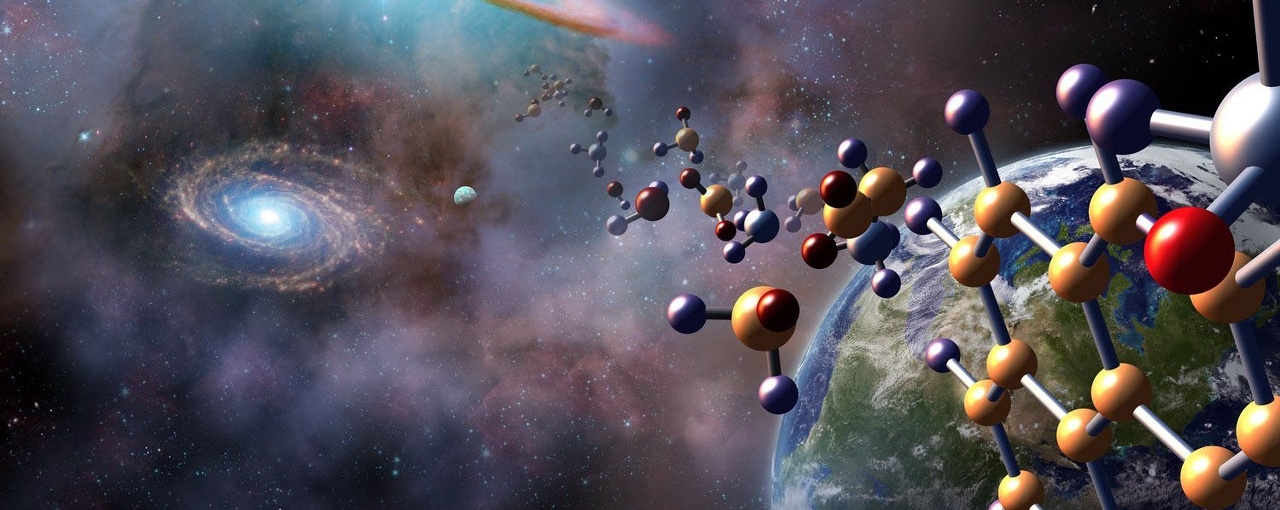
In the past two and a half years, two next-generation telescopes have been sent to space: NASA’s James Webb Space Telescope (JWST) and the ESA’s Euclid Observatory. Before the decade is over, they will be joined by NASA’s Nancy Grace Roman Space Telescope (RST), Spectro-Photometer for the History of the Universe, Epoch of Reionization, and Ices Explorer (SPHEREx), and the ESA’s PLAnetary Transits and Oscillations of stars (PLATO) and ARIEL telescopes. These observatories will rely on advanced optics and instruments to aid in the search and characterization of exoplanets with the ultimate goal of finding habitable planets.
Along with still operational missions, these observatories will gather massive volumes of high-resolution spectroscopic data. Sorting through this data will require cutting-edge machine-learning techniques to look for indications of life and biological processes (aka. biosignatures). In a recent paper, a team of scientists from the Institute for Fundamental Theory at the University of Florida (UF-IFL) recommended that future surveys use machine learning to look for anomalies in the spectra, which could reveal unusual chemical signatures and unknown biosignatures.
Continue reading “The Most Compelling Places to Search for Life Will Look Like “Anomalies””Want to Find UFOs? That's a Job for Machine Learning
In 2017, humanity got its first glimpse of an interstellar object (ISO), known as 1I/’Oumuamua, which buzzed our planet on its way out of the Solar System. Speculation abound as to what this object could be because, based on the limited data collected, it was clear that it was like nothing astronomers had ever seen. A controversial suggestion was that it might have been an extraterrestrial probe (or a piece of a derelict spacecraft) passing through our system. Public fascination with the possibility of “alien visitors” was also bolstered in 2021 with the release of the UFO Report by the ODNI.
This move effectively made the study of Unidentified Aerial Phenomena (UAP) a scientific pursuit rather than a clandestine affair overseen by government agencies. With one eye on the skies and the other on orbital objects, scientists are proposing how recent advances in computing, AI, and instrumentation can be used to assist in the detection of possible “visitors.” This includes a recent study by a team from the University of Strathclyde that proposes how hyperspectral imaging paired with machine learning could lead to an advanced data pipeline for characterizing UAP.
Continue reading “Want to Find UFOs? That's a Job for Machine Learning”A Massive Solar Storm was Detected on Earth, Mars, and the Moon
A coronal mass ejection erupted from the Sun on October 28th, 2021, spreading solar energetic particles (SEPs) across a volume of space measuring more than 250 million km (155.34 million mi) wide. This means that the event was felt on Earth, Mars, and the Moon, which was on the opposite side of the Sun at the time. It was also the first time that a solar event was measured simultaneously by robotic probes on Earth, Mars, and the Moon, which included ESA’s ExoMars Trace Gas Orbiter (TGO) and Eu:CROPIS orbiter, NASA’s Curiosity rover and Lunar Reconnaissance Orbiter (LRO), and China’s Chang’e-4 lander.
The ESA’s Solar Orbiter, Solar and Heliospheric Observatory (SOHO), and BepiColombo missions were also caught by the outburst and provided additional measurements of this solar event. The study of Solar Particle Events (SPE) – aka. solar flares – and “space weather” phenomena are vital to missions operating in Low Earth Orbit (LEO) – for example, crews living and working on the International Space Station (ISS). But it is especially vital for missions destined for locations beyond LEO and cislunar space, including Project Artemis and the many proposals for sending astronauts to the Moon and Mars in the coming years.
Continue reading “A Massive Solar Storm was Detected on Earth, Mars, and the Moon”The PLATO Mission Could be the Most Successful Planet Hunter Ever
In 2026, the European Space Agency (ESA) will launch its next-generation exoplanet-hunting mission, the PLAnetary Transits and Oscillations of stars (PLATO). This mission will scan over 245,000 main-sequence F, G, and K-type (yellow-white, yellow, and orange) stars using the Transit Method to look for possible Earth-like planets orbiting Solar analogs. In keeping with the “low-hanging fruit” approach (aka. follow the water), these planets are considered strong candidates for habitability since they are most likely to have all the conditions that gave rise to life here on Earth.
Knowing how many planets PLATO will likely detect and how many will conform to Earth-like characteristics is essential to determining how and where it should dedicate its observation time. According to a new study that will be published shortly in the journal Astronomy & Astrophysics, the PLATO mission is likely to find tens of thousands of planets. Depending on several parameters, they further indicate that it could detect a minimum of 500 Earth-sized planets, about a dozen of which will have favorable orbits around G-type (Sun-like) stars.
Continue reading “The PLATO Mission Could be the Most Successful Planet Hunter Ever”Does Beaming Power in Space Make Sense at the Moon?
Space-based solar power (SBSP) is considered one of the most promising technologies for addressing Climate Change. The concept calls for satellites in Low Earth Orbit (LEO) to collect power without interruption and beam it to receiving stations on Earth. This technology circumvents the main limiting factor of solar energy, which is how it is subject to the planet’s diurnal cycle and weather. While the prospect of SBSP has been considered promising for decades, it’s only in recent years that it has become practical, thanks to the declining costs of sending payloads to space.
However, the technology has applications beyond providing Earth with abundant clean energy. The European Space Agency (ESA) is also investigating it as a means of proving power on the Moon through the “Clean Energy – New Ideas for Solar Power from Space” study, which recently yielded a technology demonstrator known as the Greater Earth Lunar Power Station (GEO-LPS). This technology could provide a steady supply of power for future operations on the Moon, which include creating a permanent lunar base like the ESA’s proposed Moon Village.
Continue reading “Does Beaming Power in Space Make Sense at the Moon?”The Final Flight of Ariane 5 Means That Europe is Out of Rockets
The Ariane 5 rocket, developed by Arianespace for the European Space Agency (ESA), has had a good run! The rocket series made its debut in 1996 and has been the workhorse of the ESA for decades, performing a total of 117 launches from Europe’s Spaceport in French Guiana. The many payloads it has sent to space include resupply missions to the International Space Station (ISS), the BepiColombo probe, the comet-chasing Rosetta spacecraft, the James Webb Space Telescope (JWST), the JUpiter ICy moons Explorer (JUICE), and countless communication and science satellites.
Alas, all good things must come to an end. In 2020, Arianespace and the ESA signed contracts for the rocket’s last eight launches before the Ariane 6 (a heavier two-stage launcher) would succeed it. The Ariane 5‘s final flight (VA261) lifted off from Europe’s Spaceport at 06:00 PM EST (03:00 PM PST) on July 5th, 2023, and placed two payloads into their planned geostationary transfer orbits (GTO) about 33 minutes later. On the downside, this means that the ESA is effectively out of launch vehicles until the Ariane 6 makes its debut next year.
Continue reading “The Final Flight of Ariane 5 Means That Europe is Out of Rockets”ESA's Euclid Mission is Off to Explore the Dark Universe
On Saturday, July 1st (Canada Day!), the ESA’s Euclid space telescope lifted off from Cape Canaveral in Florida. This next-generation astrophysics mission will spend the next few weeks flying to the Earth-Sun L2 Lagrange Point, where it will spend the next six years observing one-third of the sky. During that time, Euclid will observe billions of galaxies to a distance of 10 billion light-years, leading to the most extensive 3D map of the Universe ever created. This map will help astronomers and cosmologists resolve the lingering mystery of Dark Matter and Dark Energy (DM & DE).
Continue reading “ESA's Euclid Mission is Off to Explore the Dark Universe”
